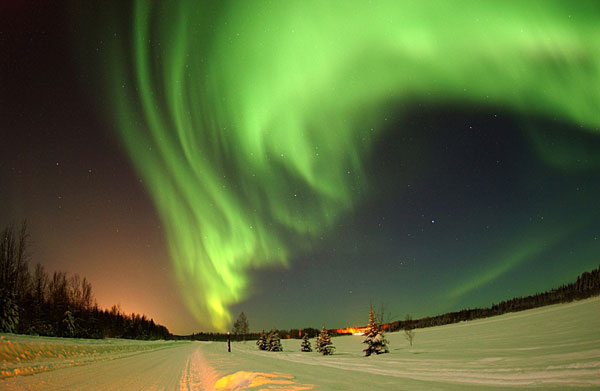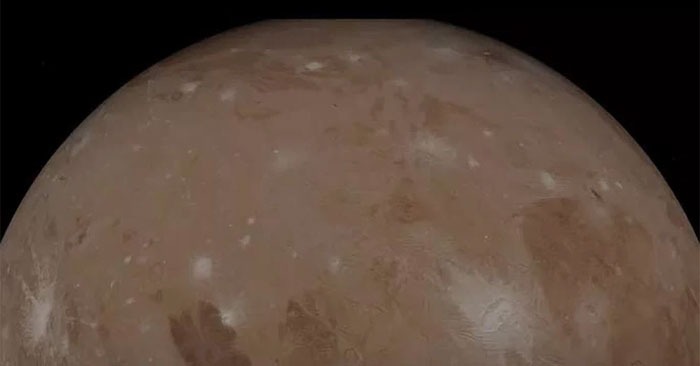Solar Storm is making landfall on Earth
According to the National Oceanic and Atmospheric Administration (NOAA), this aurora appears at much lower latitudes than usual and could appear on the night of September 27 in the northern United States, including including New York, Wisconsin and Washington.

Solar storms are formed from a large amount of charged particles and plasma ejected by the Sun throughout space. Strong solar storms approaching Earth can cause auroras and cause magnetic storms that disrupt satellites and ground power transmission equipment.
According to NOAA, this solar storm this time is ranked as a G2 storm on a five-level scale, with the strongest being G5, so it is still relatively weak and does not cause major impacts.
Only G4 or higher solar storms are capable of causing widespread power outages on Earth.
Solar storms occur when coronal mass ejections (CMEs) around the Sun's equator at tremendous speed escape the Sun's outermost atmosphere and plunge into the Earth's magnetic shield. After exiting the Sun, the CME takes about 15 to 18 hours to reach Earth.
NOAA says that during this time period up to 4 CMEs could impact the Earth. The magnitude of the effects also depends on the intensity of the CME.
The Sun is approaching its maximum period - the most active time in its 11-year cycle, so its magnetic field is also in the strongest state. This means that there will be more and more solar storms of larger magnitude.
NASA predicts that the Sun's activity will gradually increase until July 2025. After that, this activity will slow down and approach a minimum in the cycle.
You should read it
- A giant solar storm is moving to Earth today
- Memorize with a curving screen like a flying dragon's aurora
- Found evidence of Sun storm in wood rings
- What if hurricanes disappeared from Earth?
- 5 applications to help you track the activity of the storm easily
- How to name storms in the Pacific
- Saturn, the most beautiful planet of the solar system through the Cassini spacecraft prism
- Storm Worm ruled the world of blogs
May be interested
- A meteor with a speed of 32,000 km / h is approaching Earth's orbit
 2021 ny1, a giant asteroid, 3 times the size of the statue of liberty, is moving at high speed. according to nasa, 2021 ny1 will come close to earth's orbit within the next few weeks, but the probability of a collision is very low.
2021 ny1, a giant asteroid, 3 times the size of the statue of liberty, is moving at high speed. according to nasa, 2021 ny1 will come close to earth's orbit within the next few weeks, but the probability of a collision is very low. - The most beautiful meteor shower of the year and amazing astronomical phenomena in August
 this august, some of the most exciting astronomical events of 2021 will take place. one of them is the brilliant perseid meteor shower, which will light up the night sky on august 12.
this august, some of the most exciting astronomical events of 2021 will take place. one of them is the brilliant perseid meteor shower, which will light up the night sky on august 12. - Stunning photos of the largest moon in the Solar System
 on june 7, nasa's juno spacecraft captured stunning images of jupiter and its icy moon ganymede - the largest moon in the system. the sun, as it flies closer to it than any other spacecraft since 2000.
on june 7, nasa's juno spacecraft captured stunning images of jupiter and its icy moon ganymede - the largest moon in the system. the sun, as it flies closer to it than any other spacecraft since 2000. - Unusually large amount of methane detected on Saturn's moon: Is it alien life?
 while scientists say it's too early to confirm this, this is still a possibility as it explains the unusual data appearing on this moon.
while scientists say it's too early to confirm this, this is still a possibility as it explains the unusual data appearing on this moon. - For the first time, NASA successfully built a 3D map of the heliosphere, the 'giant bubble' is protecting the Earth
 from the data of the ibex space telescope, we know how the shield shape protects life.
from the data of the ibex space telescope, we know how the shield shape protects life. - Astrophysics professor teaches how to jump into a black hole so it's 'safe' and possible events
 what if we decide to take the next step: visit, or even go into, a black hole? if you're determined to jump straight into the center of a black hole, you won't regret it.
what if we decide to take the next step: visit, or even go into, a black hole? if you're determined to jump straight into the center of a black hole, you won't regret it.






 Today, the solar storm will 'directly hit' the earth
Today, the solar storm will 'directly hit' the earth What is solar storm? How solar storm affects the Earth
What is solar storm? How solar storm affects the Earth A giant solar storm is moving to Earth today
A giant solar storm is moving to Earth today What if hurricanes disappeared from Earth?
What if hurricanes disappeared from Earth? Found evidence of Sun storm in wood rings
Found evidence of Sun storm in wood rings